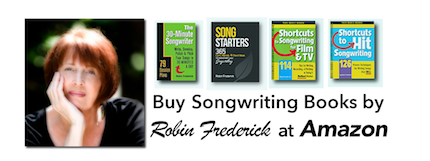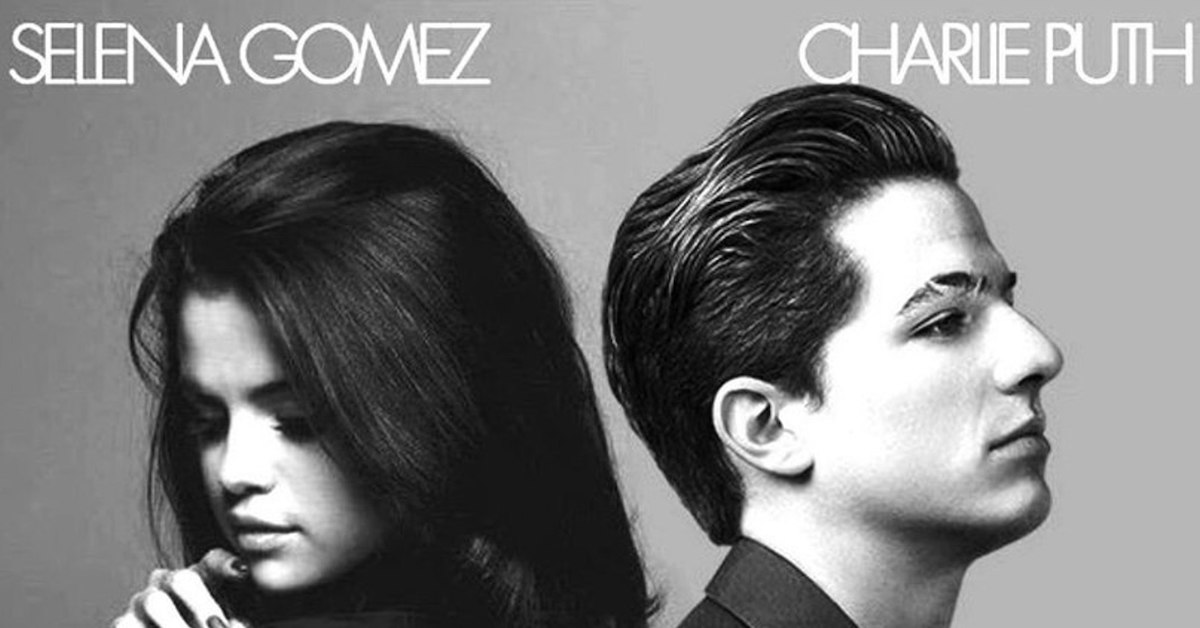If you could ask a question of any successful hit songwriter, what would you want to know? You’d probably ask how they do it. In fact, you can ask that question and get an answer… just by taking an in-depth look into their biggest hits.
“We Don’t Talk Anymore” – Charlie Puth (feat. Selena Gomez)
TECHNIQUES TO HEAR AND TRY:
- Start a song with the chorus.
- Take a fresh approach to a theme/core idea.
- Write a melody that keeps listeners engaged.
“We Don’t Talk Anymore” is a contemporary Pop mega-hit. You know you’re “mega” when you’ve got over a billion and a half views on YouTube and triple Platinum sales. But success was no slam dunk. This song is a duet and a mid-tempo ballad, both of which have traditionally had trouble climbing the charts. So, let’s take a look to see what made the difference.
Listen to the song. Read the lyrics.
Genre/Style: Pop
(What is a genre? Watch this video.)
This huge Pop hit has a catchy R&B-style melody and an intimate, conversational lyric, an approach you hear in many recent Pop hits by artists like Shawn Mendes, Selena Gomez, Justin Bieber, and Lauv. The repetitive four-chord track is perfectly in tune with today’s radio-friendly Pop hits.
The mid-tempo track ambles along at a comfortable 100 beats per minute (BPM). Your resting heartbeat is somewhere between 65 and 75 BPM, so this song lifts the energy a little but not as much as a more uptempo Pop/Dance track would. Instead, it quickly involves listeners in the situation and character of the singer, delivering the lyric in a stream of non-stop, cascading phrases that sweep the listener along.
Song Structure
There’s no intro at all. Not a note, not a chord. The lead vocal comes right in with the first line of the chorus: “We don’t talk anymore.” It puts the listener smack in the middle of the song’s situation.
Here’s the complete song structure:
CHORUS
VERSE 1 / PRE-CHORUS / CHORUS
VERSE 2 / PRE-CHORUS / CHORUS
INSTRUMENTAL POST-CHORUS
PRE-CHORUS / CHORUS
VERSE 1: “I just heard you found the one you’ve been looking…”
VERSE 2: “I just hope you’re lying next to somebody…”
PRE-CHORUS 1: “Don’t wanna know what kind of dress …”
PRE-CHORUS 2: “Don’t wanna know if you’re looking…”-
CHORUS: “We don’t talk anymore…”
POST-CHORUS: My one concern with this song structure is the instrumental section at 2:14 where a bridge would normally be. I think listeners could lose interest there. But the lead instrument is fresh and original and adds yet another catchy hook to the track. This is what a good post-chorus should do and it’s becoming more common in today’s Pop genre.
– TRY IT NOW –
Listen to the song or watch the video and notice the song structure. Print out the lyrics and read them as you listen. Mark the song sections on the lyric page.
LYRICS
Starting off your song with a chorus is a good way to grab attention and get the listener into the heart of the song. But it can be risky because the listener knows nothing at all about the song’s theme, the singer, or the situation.
An opening chorus has to stand on its own, keeping the listener interested until you can fill them in on some of the details in the verse.
GET YOUR LISTENER INVOLVED: The opening line of the chorus, “We don’t talk anymore” immediately clues the listener in that there’s trouble here, maybe they’re about to witness a little drama.
Drama appeals to listeners. It’s what brings people to the theater, glues them to their TV screens, drives best-selling books, and it certainly works for songs, too. A line that promises an interesting conflict or trouble in paradise is a good way to start off.
Find out more about getting your listener involved in your song.
In this case, the opening line happens to be the first line of the chorus and it’s repeated three times. So, the listener knows it’s important and is probably wondering…
- Did this relationship just drift apart?
- When did the singer realize this?
- Why is this so important to the singer?
Lots of questions to answer here. In this case, though, the answer may not be what you’re expecting. (Gotta love that!)
GIVE YOUR CORE IDEA A FRESH ANGLE: At first, I thought this was just another song about a breakup, a standard “I just got my heart stomped on” song. But that didn’t explain why it was a duet or why the fact that they didn’t talk anymore was so central to the chorus. If one person walked out, why would the other expect they’d still be talking?
The light bulb finally went on for me. (You probably got there already, but it sometimes takes me a while.) In fact, it’s not a breakup song at all. The lyric is about the fears and insecurities that sneak into a relationship when two lovers aren’t communicating.
After the opening chorus repeats the fact that they don’t talk to each other anymore, the very first line of Verse 1 tells us that the singer is listening to gossip (“I just heard…”). It’s enough to start a train of suspicious thoughts and anxious imaginings. The lyric in the pre-chorus is a perfect example:
Don’t wanna know
What kind of dress you’re wearing tonight
If he’s holding onto you so tight
The way I did before
In Verse 2, we find out that the same thing is happening to the other person in the relationship. She even thinks about showing up to try to talk to him but is too afraid that her fears are real.
When there’s no one to reassure us, we can easily start to feel insecure, imagining that we’re not loved, that the other person has found someone else. It’s just human nature. Whether communication ceases because people get too busy with work or life or just forget how important it is to talk things over, this song reminds us of what can happen.
It can be hard to pull off a lyric idea like this. When listeners expect one thing ( for example, a breakup song) and you’re saying something else, you really have to make them hear you. In this song, the chorus hammers home the idea. The title/hook phrase “We don’t talk anymore” is repeated five times!
– TRY IT NOW –
Choose an emotional situation and try looking at it in different ways. You can use an event from your own life or a scene from a TV show, book, or movie. What’s the obvious reason or reaction to the situation? Can you think of another angle or way to approach it?

MELODY
REPETITION: In this song, the melodies in the verse, pre-chorus, and chorus are loaded with repetition. The chorus opens with three phrases that are almost identical in melody and lyrics. (“We don’t talk anymore. We don’t talk anymore. We don’t talk anymore…”). There’s only one note that changes pitch. Everything else is a pure repetition. Then there’s a big release on the line “…like we used to do.” The rhythm of the notes and the pitches change as the line soars upward.
Repetition with variation is an essential contemporary song crafting tool. Set up a repeated pattern, then change it.
It’s up to you how many repetitions you think your listener will want to hear before they get bored. In this chorus, the repeated lines are short and the chords are changing underneath each phrase, making each repetition sound different. This is a great technique to try yourself: Repeat a melody over changing chords.
– TRY IT NOW –
Play and sing the chorus or just sing along with the track to hear the melodic repetition and changing chords. How does that feel to you? Does it keep the repetition interesting? What would it sound like if the chords didn’t change?
More melody tricks
NOTE RANGE: The R&B underpinnings of this song can be heard in the limited note range of the melody. R&B tends to steer clear of those big, blockbuster Pop chorus melodies that leap up into the stratosphere, instead opting for a more intimate, restrained style.
The entire song has a note range one octave. The direct, unvarnished quality of the lyric and limited note range give the song a conversational feel, as if the singer is just thinking out loud.
MOMENTUM: As I mentioned earlier, the steady, underlying beat is not particularly fast (100 BPM). At this speed all it would take to lose listeners is a few long pauses between lines or song sections. This melody avoids both of those traps. There are no pauses longer than one beat between any line or song section.
The melody also pulls the listener along with a simple trick used in many current hits. If you count along with the steady underlying beat (1-2-3-4), you’ll notice Beat 1 is the one that gets the most emphasis. Many songs, especially older songs, use this strong beat to begin a melody and lyric line. But not this song. Instead, the lines of the pre-chorus and chorus begin on Beat 3 and end on Beat 1.
This has the effect of pulling the listener toward the strongest beat instead of leading away from it, creating a constant sense of anticipation.
– TRY IT NOW –
Listen to the song and notice which melody lines repeat and where. Then see if you can count along and pick out a few of the lines that start on Beat 3 and end on Beat 1. If you haven’t done this before, it can be a bit of a challenge.
CHORDS
This is a four-chord song in which the progression repeats over and over.
| F | G | A min | E min |
(To play along on guitar, capo on the fourth fret or transpose your keyboard +4.)
– TRY IT NOW –
Learn to play and sing the verse, pre-chorus, and chorus of this song. Try writing a few lyric lines to replace the ones in the song, then alter the melody. Explore what you can do with a chord progression like this one.
PRODUCTION
This track has some thick snare and kick drum sounds created by layering several sounds together, but there are also places in the track where simple handclaps are all that keeps the beat going. A guitar loop (in the clear at the top of the song) runs through the entire track and keeps the chord progression going.
Charlie Puth uses his voice like an instrument and I think vocal effects are the real star of this track. From vocoder-style stacking to echoes buried in reverb, they fill up the track with a sweet, light sound that adds warmth and a very human feel.
Charlie Puth talks about doing most of his songwriting and production on the road. He takes a portable Pro Tools setup with him when he’s on tour, but he uses his iPhone as an integral part of writing and producing.
Check out this video on YouTube where Charlie Puth describes how he created the track for his hit “Attention,” a song that’s similar in many ways to “We Don’t Talk Anymore.”
– TRY IT NOW –
Play a repetitive, four-bar chord progression on guitar or keyboard. You can record it and loop it using a smartphone app or computer music software. Create a melody and lyric (top-line) and record it. Put it away and come back later. Listen to what you recorded. If you like the idea, keep working on it.
READ MORE SONG GUIDES ON THIS SITE and learn from the hits!
